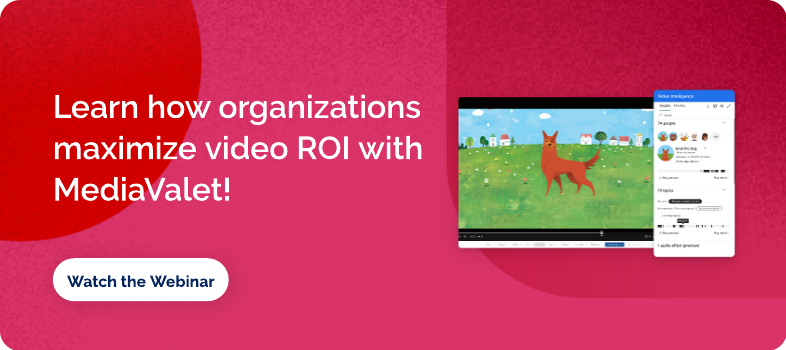As video content continues to dominate marketing, training, and communications, organizations are faced with a growing challenge: how to efficiently store, manage, and distribute their video assets. Without a structured approach, video files become scattered, difficult to find, and hard to manage across teams. Efficient video asset management is critical.
This is where Digital Asset Management (DAM) emerges as the ideal solution for Video Asset Management (VAM). Unlike standalone video cms, a DAM platform provides a comprehensive approach to managing video alongside all other digital content, offering better organization, accessibility, security, and scalability.
In this article, we’ll explore why organizations choose DAM for video distribution and management, its benefits, key features, and how to implement it effectively.
What is Video Asset Management?
Video asset management (VAM) refers to the process of organizing, storing, retrieving, and distributing video content efficiently. While standalone VAM systems exist, they often lack the flexibility and integration capabilities of a full-featured DAM solution.
A Digital Asset Management (DAM) system enhances video asset management by allowing organizations to:
- Store videos alongside other assets (images, documents, etc.) in a singular digital asset library
- Use AI-powered metadata tagging for easier search and retrieval
- Ensure secure sharing and access control across different teams and stakeholders
- Integrate with content creation, marketing, and distribution platforms
By implementing a DAM for video asset management, businesses centralize all their digital assets in one place, streamlining video workflows and making collaboration more efficient.
Interested in a self-directed tour of the MediaValet platform? Check it out here!
Benefits of Implementing DAM for Video Asset Management
1. Centralized Storage for All Digital Assets
A major issue with standalone video cms is that they only manage videos, leaving other creative assets scattered across different platforms. With a DAM system, all assets—videos, images, documents, graphics, and more—are stored in a single, searchable repository.
This eliminates confusion, prevents file duplication, and ensures that everyone on the team has access to the latest approved versions of assets, including video content.
2. Enhanced Searchability with AI and Metadata Tagging
Searching for video files by filename alone is inefficient, especially in large organizations with extensive media libraries. A DAM system enhances video asset management with advanced metadata and AI-powered tagging.
With a DAM, users can search for videos by keywords, tags, facial recognition, object detection, and even speech-to-text transcripts. This significantly reduces the time spent looking for the right video and allows teams to work more efficiently.
3. Secure Access and Permissions Control
Many businesses handle sensitive video content, such as internal training materials, product demos, and confidential corporate footage. A DAM provides advanced security features, including:
- Role-based access controls (limit who can view, edit, or download video files)
- Watermarking and encryption to protect against unauthorized use
- Audit logs to track access history and compliance with company policies
These security measures ensure that only the right people have access to critical video assets, reducing risks of leaks or misuse.
4. Seamless Collaboration and Workflow Automation
Managing video projects involves multiple stakeholders, from content creators and editors to marketing teams and legal reviewers. A DAM enables efficient collaboration by:
- Automating proofing and approval processes to speed up content reviews
- Providing version control to avoid confusion over the latest edits
- Integrating with video editing tools like Adobe Premiere Pro
With built-in workflow automation, teams can move projects forward faster, ensuring deadlines are met without compromising quality.
5. Effortless Distribution and Publishing
Once a video is finalized, it needs to be shared across various platforms. A DAM simplifies video distribution by allowing teams to publish directly to:
- Websites and blogs
- Social media (YouTube, LinkedIn, Instagram, Facebook)
- Learning Management Systems (LMS) for training purposes
- Email campaigns and marketing automation platforms
By managing all video distribution channels from one platform, DAM helps teams maintain brand consistency, optimize video formats, and track engagement metrics, performance analytics, optimize formats for different platforms, and ensure content consistency across multiple channels.

Key Features to Look for in a DAM System for Video Asset Management
When evaluating a DAM solution for managing video assets, it’s essential to ensure it aligns with your organization’s needs. Here are the most important features to consider:
Step 1: Assess Your Needs
Identify the challenges your organization faces in managing video assets, such as disorganized storage, slow retrieval times, or compliance issues.
Step 2: Choose the Right DAM Solution
Select a DAM system that offers video-specific features, AI tagging, security measures, and integration capabilities that align with your business needs.
Step 3: Develop Metadata and Tagging Standards
Establish consistent metadata rules for categorizing and tagging videos, ensuring that all assets remain easily searchable over time.
Step 4: Train Your Team
Provide training on best practices for uploading, tagging, retrieving, and distributing video content within the DAM to maximize efficiency.
Step 5: Monitor and Optimize
Regularly analyze system performance, user adoption, and video engagement metrics to improve workflows and ensure your DAM strategy remains effective.
While standalone video content management systems offer some benefits, a DAM platform is the superior solution for managing video content at scale. A DAM provides centralized storage, advanced search capabilities, secure access control, seamless collaboration, and effortless distribution—all in one system.
By implementing a DAM for video asset management, organizations reduce inefficiencies, improve content discoverability, and enhance video workflows. Investing in the right DAM solution ensures your video assets remain organized, secure, and easily accessible for years to come.
Want to see how a DAM can transform your video asset management and workflows? Book a demo today!
Related Articles
Let's have a DAM good time
Meet with one of our product experts.




